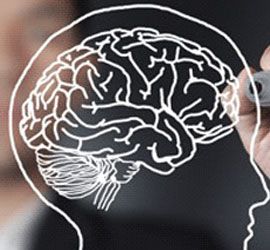Article
MRI May Advance Parkinson Gene Therapy
Author(s):
Up until now, these treatments have not produced promising efficacy results in clinical trials. MRI could show the way.
MRI could direct placement of gene therapies for Parkinson.

Gene therapies for Parkinson disease (PD) appeared to be safe in clinical trials, but up until now these treatments have not produced promising efficacy results. MRI could be the key to improvement.
For more than a decade, researchers have been working on gene therapy treatments for PD. Although it may seem counterintuitive, gene therapy uses viruses that insert DNA into cells in the brain with the goal of churning out helpful molecules.
Therapeutic targets have included increasing dopamine levels to help balance out PD dopamine deficits and increasing gamma amino butyric acid (GABA), an inhibitory neurotransmitter that can quell brain regions overactive in PD. Researchers also have attempted to boost levels of protective growth factors, such as glial-derived neurotrophic factor (GDNF) and neurturin (NRTN), to potentially protect and regenerate susceptible neurons.1
The good news is that these therapies now appear to be safe. However, efficacy results so far have been disappointing. For example, phase 2 studies of NLX-P101, a gene therapy designed to boost GABA levels,2 and phase 2 results of CERE-120,3 gene therapy to increase NRTN, showed only limited movement improvements. Similarly, two Phase 1 trials that studied aromatic-L-amino acid decarboxylase (AADC) gene therapy, designed to increase levels of dopamine, showed only modest efficacy.4,5
Neurosurgeon Krystof Bankiewicz, MD, PhD, of the University of California, San Francisco, is a leading investigator in the development of the AADC gene therapy.5 “The issue that was identified is that we were not able to have adequate coverage with the brain therapy…the needle was placed inside the brain without us knowing if the needle was placed correctly,” he told Neurology Times.
Despite setbacks, gene therapy research for PD pushes forward, this time with the help of MRI to guide where the infusion goes during surgery. Dr Bankiewicz suggested that the key is placement of the injections used in gene therapy, as well as using an appropriate volume of the viral vectors. He stated, “I think all the gene therapy trials never really touched the potential simply because the drug was not delivered correctly.”
Dr Bankiewicz and colleagues are continuing trials of AADC-containing viral vectors, as well as GDNF-containing viral vectors, using MRI to direct drug placement, spiked with a gadolinium tracer that shows where the infusion has gone on the MRI scan.
Dr Bankiewicz is optimistic about the potential of these studies, stating, “Because of the image-guided delivery we are very pleased with having a planned delivery.”
Key points
• Gene therapies for PD are safe, but studies have not produced convincing findings about efficacy.
• MRI could direct placement of PD gene therapies.
• Trials of PD gene therapy, using MRI to guide placement, are under way.
References:
1. Bartus RT, Weinberg MS, Samulski RJ. Parkinson’s disease gene therapy: success by design meets failure by efficacy. Mol Ther. 2014;22:487-497.
2. Diaz-Nido J. NLX-P101 an adeno-associated virus gene therapy encoding glutamic acid decarboxylase, for the potential treatment of Parkinson’s disease. Curr Opin Investig Drugs. 2010;11:813-822.
3. Bartus RT, Baumann TL, Siffert J, et al. Safety/feasibility of targeting the substantia nigra with AAV2-neuturin in a Parkinson patients. Neurology. 2013;80:1698-1701.
4. Muramatsu S, Fujimoto K, Kato S, et al. A phase I study of aromatic L-amino acid decarboxylase gene therapy for Parkinson’s disease. Mol Ther. 2010;18:1731-1735.
5. Eberling JL, Jagust WJ, Christine CW, et al. Results from a phase I safety trial of hAADC gene therapy for Parkinson disease. Neurology. 2008;70:1980-1983.





